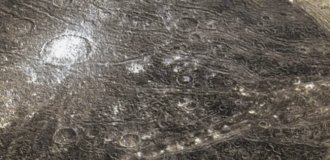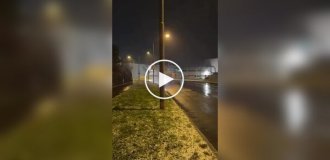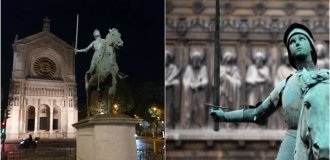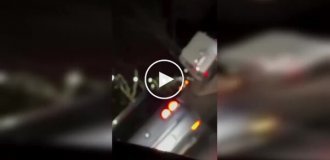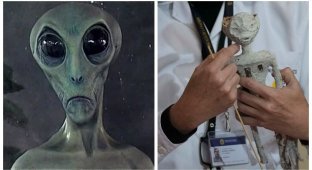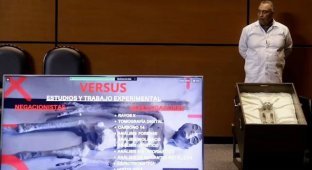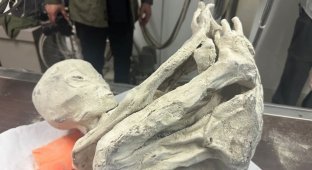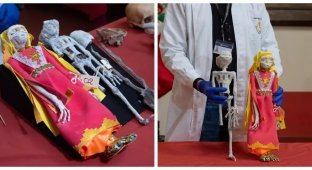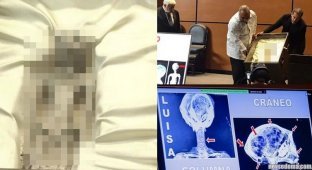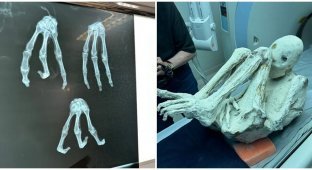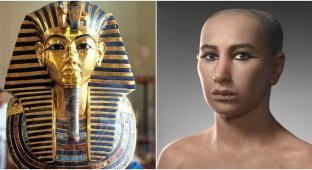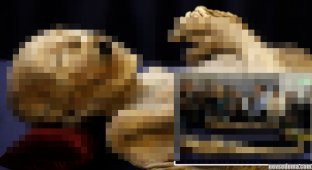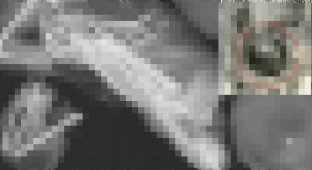Three-fingered “alien mummies” from Peru again puzzled scientists (8 photos + 1 video)
Mummied creatures with an elongated skull and three fingers discovered in Peru and dubbed "alien" are making headlines again as new research questions their mythical status. 
In 2017, six unusual humanoid mummies were discovered in a cave in the southern Peruvian city of Nazca - four men, one woman, one nine-month-old baby.
Journalist and ufologist Jaime Maussan found these mummies and exhibited them before the Mexican Congress, claiming that they were alien creatures that once walked the Earth. Although Maussan does not give up his version, experts are confident that the mummies are nothing more than dolls manipulated by grave robbers. 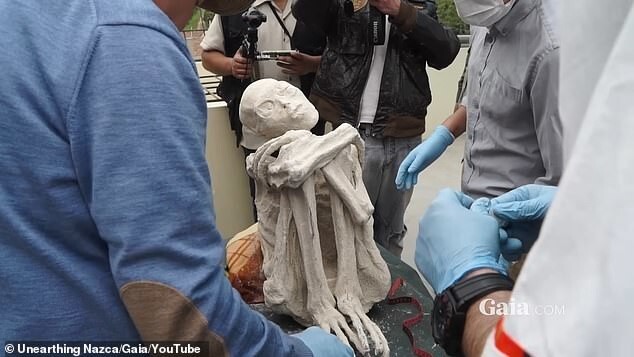
However, recent analysis of one of the humanoids, designated "Maria" (M01), showed surprising results. Peruvian scientists carried out a series of tests, including electron microscopy, x-rays and scanning of internal organs.
The study showed that Maria has certain biological similarities with humans. Her bones blend smoothly under a mummified shell, like those of humans, and her elongated skull shows no signs of artificial deformation. 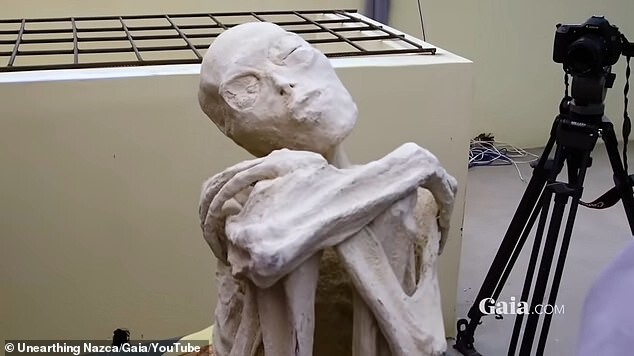
“The most striking feature of the skull is its significant elongation, with no outward signs of compression of the skull by external agents,” says the study, published in the Journal of Social and Environmental Management. “In particular, it is the cranial vault that demonstrates atypical growth and development, reminiscent of the dolichocephalic phenotype. In addition, the cranial volume is 30 percent larger than that of a normal person." 
Maria also exhibits marked morphological and anatomical differences from humans. She lacks hair and external ears, and her hands and feet have three fingers with four phalanges each. She also has bulging eyes, protruding jaws, and six missing teeth.
“The most striking and unusual features of the humanoid body are in its arms and legs,” the scientists note. “The arms are as wide as a man’s, but eight inches longer.” It is noteworthy that each finger of the hand has four phalanges, unlike the three phalanges of an ordinary person. The bones of the foot flow smoothly into three toes, the width of which is similar to the width of the human foot, but they are much longer - nine inches. At the level of the toes, four phalanges are observed on each of the three feet, while normal people usually have only three phalanges per toe." 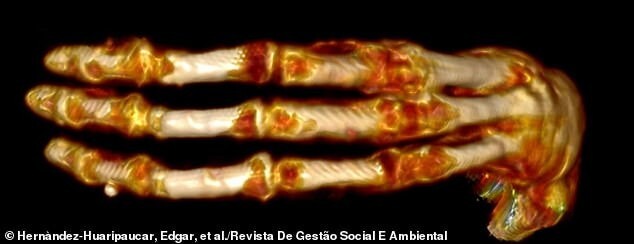
The width of the wrist bones of the palm and the base of the three fingers blend smoothly and evenly into each other, which, according to the team, makes the hands as wide as a person's, but eight inches longer.
Compared to a normal human foot, Mary's calcaneus, which forms the heel, has a different shape and structure. Typically, human heel bones have a large bump at the back that helps support body weight and maintain balance when a person stands upright on two legs. However, Maria does not have this tubercle, which suggests that she walked hunched over to maintain stability. 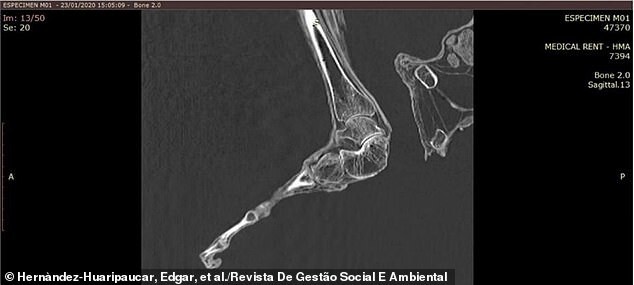
Analysis of the images also showed that the creature suffered from arthritis in its arms and legs, and also had a damaged spine. 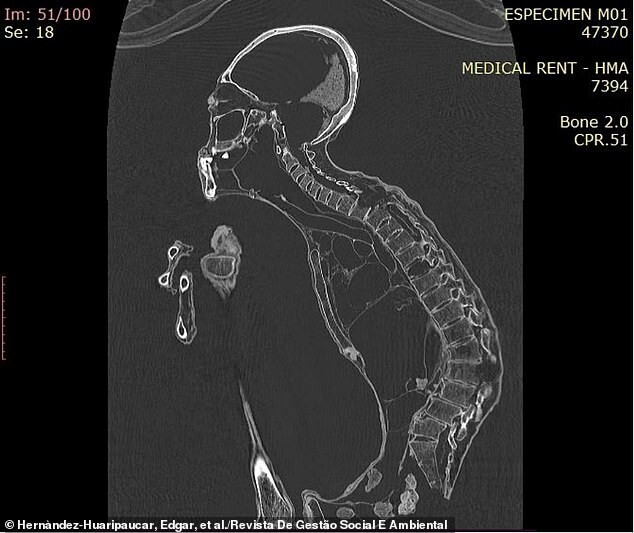
The study dated Maria to between 240 and 383 AD, coinciding with the rise of the ancient Nazca civilization. This suggests that Mary may have been associated with this culture.
Previous DNA studies concluded that the mummies were modified remains of pre-Columbian people. The new study says the following:
“Based on surface morphological and tomographic analysis, it is concluded that specimen M01 is a desiccated humanoid body with a biological architecture similar to that of a human.”
The new study raises more questions than it answers. Scientists are unable to pinpoint Mary's origins or her unique physical characteristics. Further research, including genetic tests, is needed to clarify the mystery of these unusual remains.
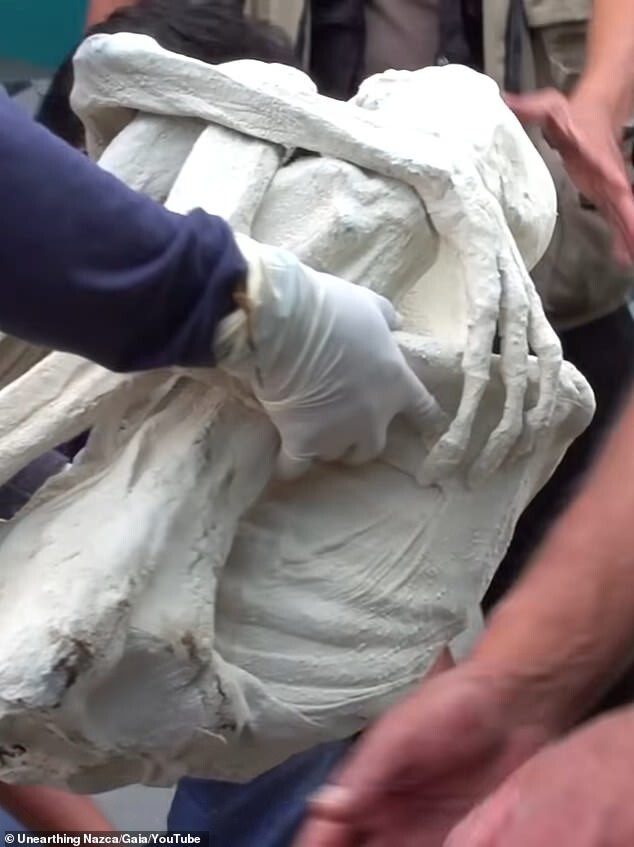
Discoveries related to the “three-fingered alien mummy” from Nazca continue to intrigue researchers and the public. New research sheds light on Mary's biological similarities and anatomical differences, offering compelling evidence of her unearthly origins. However, a definitive answer to the question of the true nature of these remains may require many more years of research.


